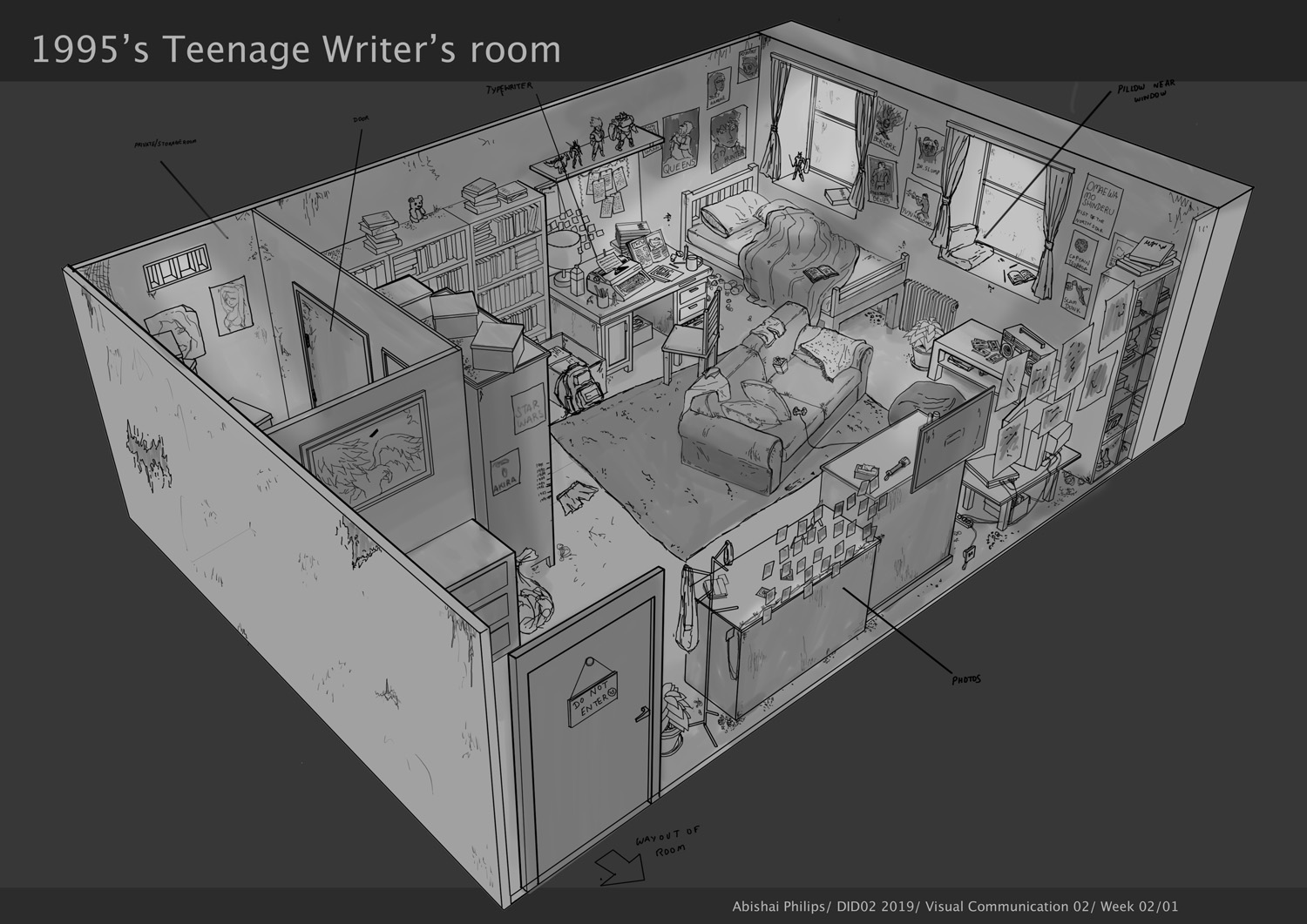Fundamentals of Design
VISUAL STORYTELLING
Painting spaceships, post-apocalyptic cities and alien worlds is fun, but it’s not an ideal way for students to learn design. These topics often lack the restrictions necessary for students to develop their analytical and problem solving skills. A sci-fi spaceship for example, is mostly playing with forms. There are generally no rights or wrongs. You keep sketching until you find something cool and just add cockpits and engines to it. Students with a good eye for forms will do well, but those who lack experience will often fail and become frustrated. From a teacher’s perspective, it’s almost impossible to help these students because it all comes down to personal taste. To solve this, you can either sketch it out yourself (which doesn’t teach the students) or tell them to keep trying until they get lucky (could be never).
A better approach is to add restrictions to the design assignment. A simple way to do this is by placing the design within the real world. Now students can’t do crazy stuff or draw aimlessly on a blank canvas until they get lucky.
One of our first assignments is to design a teenager’s bedroom. It might sound simple, but it’s actually pretty difficult and very time consuming - exactly what students should experience and overcome. Surprisingly, the end goal here is not the teenager’s bedroom per se, but the design pipeline itself - a pipeline, once learned, can be used on any design project. It gives students a solid starting point no matter what the subject is.
The first step is to gather as much references as possible (and within the right time period). Next, students plan out the overall space and set dress it with furniture. Finally, small details are added to bring the set to life. In addition, the requirement is to make this space feel “lived in” and not a perfect IKEA showroom. This means placing objects naturally but still retain a focal point. Due to the real world restrictions, teachers can help students at every step and do not have to depend on luck.
As shown here, most students do well on this assignment (all images are from the same class). Each bedroom layout is unique, visually interesting and tells a story. And most importantly, demonstrate common sense and an understanding of the world around us - exactly what art directors want to see from a junior designer. Later in the terms, these students will be able to tackle more imaginary worlds with confidence.
If you are learning, don’t rush ahead with speed-paintings and photo-bashing. Slow down, take your time, and learn the fundamentals of design.


Can you find the polaroid camera, walkman and VHS player?


Can you find the hiking stick, scarf and cockatoo?


Can you find the Hurricane plane model, dog bowls and rubik's cube?


Can you find the whiskey bottle, dying plant and Green Day flier?


Can you find the jar of coins, walkie talkie and reading glasses?

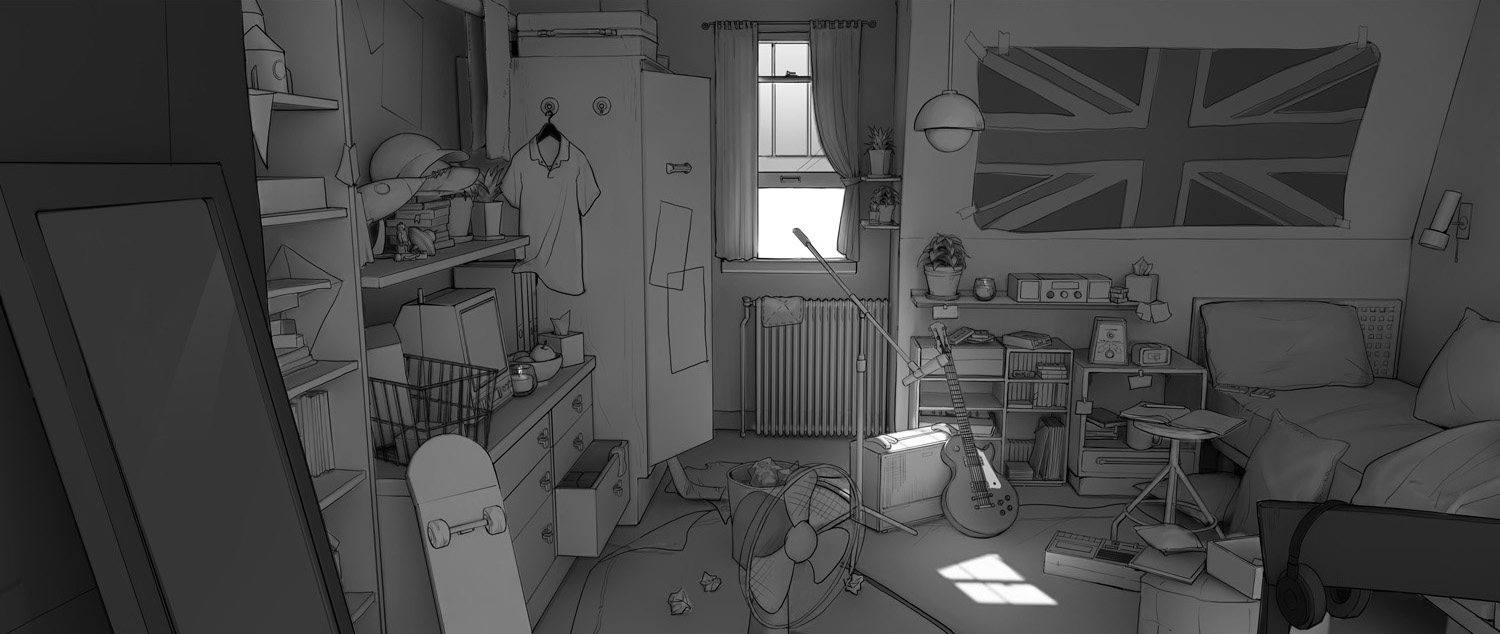
Can you find the KISS sticker, UFO spinner and music sheets?


Can you find the 2001 Space Odyssey poster, classic alarm clock and microwave dinner?


Can you find the N64, Gameboy and handsaw?


Can you find the mop, scissors and skis?


Can you find the Playstation, Rayman board and hard helmet?


Can you find the 1.44 floppy disk container, Akira poster and motherboard?
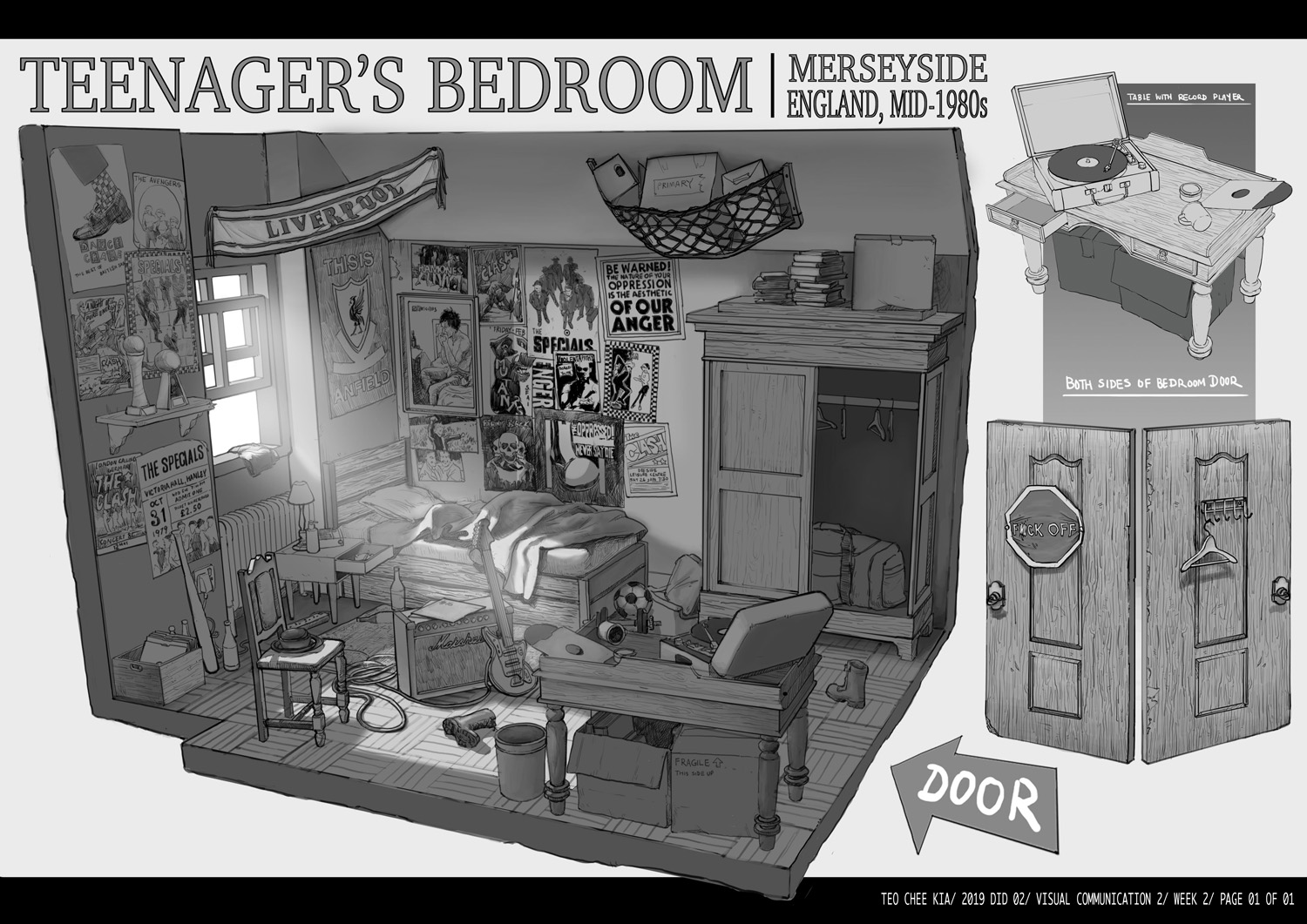
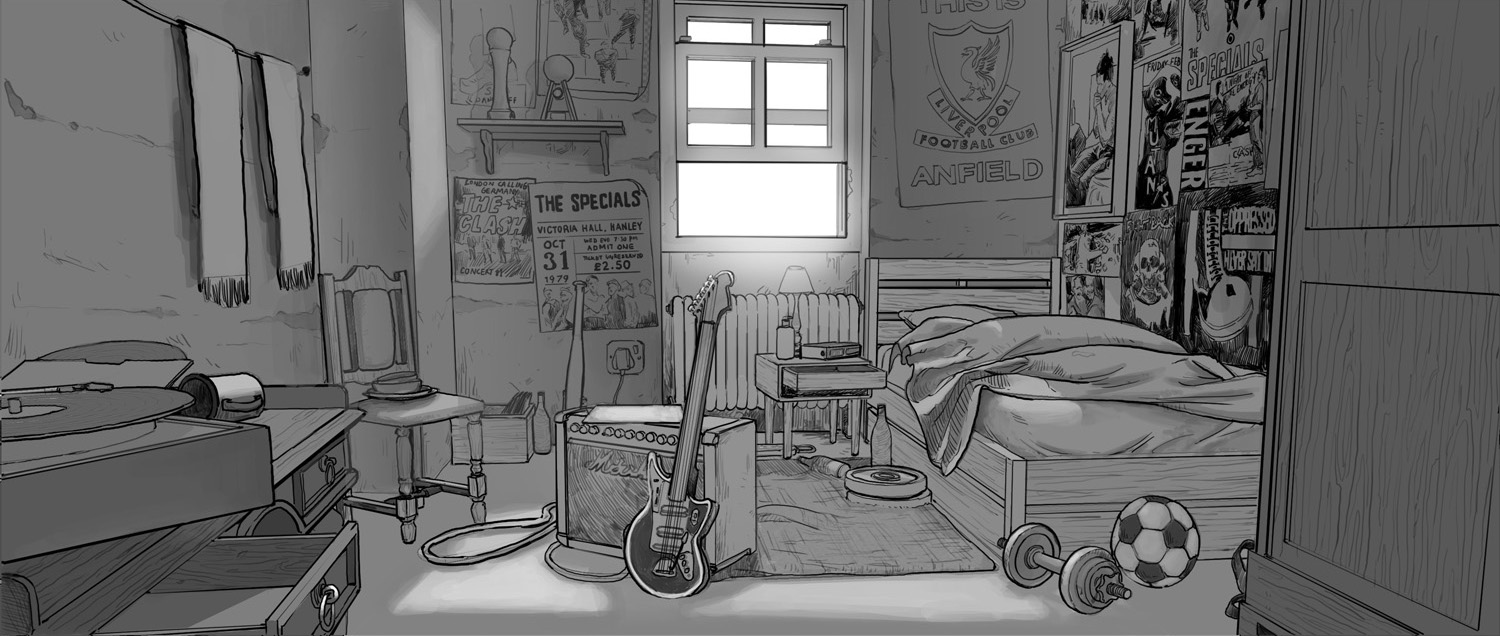
Can you find the power strip and boot?


Can you find the Pan Am bag, feather duster and 2 pig toys?


Can you find the PC, lava lamp and the metronome?


Can you find the school uniform, crutch and Robotech toy?

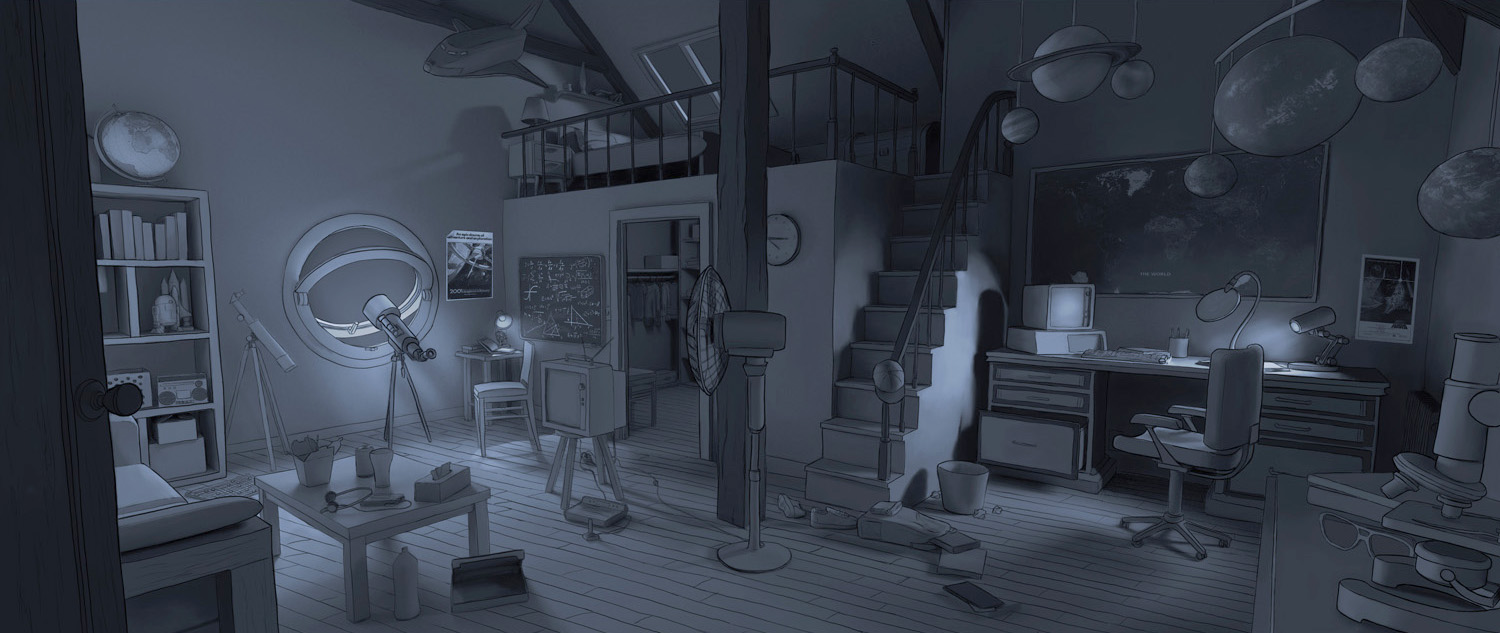
Can you find the Space Shuttle toy, Star Wars New Hope poster and Atari?


Can you find the set square ruler, bobblehead toy and pencil sharpener?


Can you find the umbrella, handcuffs and houdini poster?


Can you find the spray booth, model air compressor and small saw?

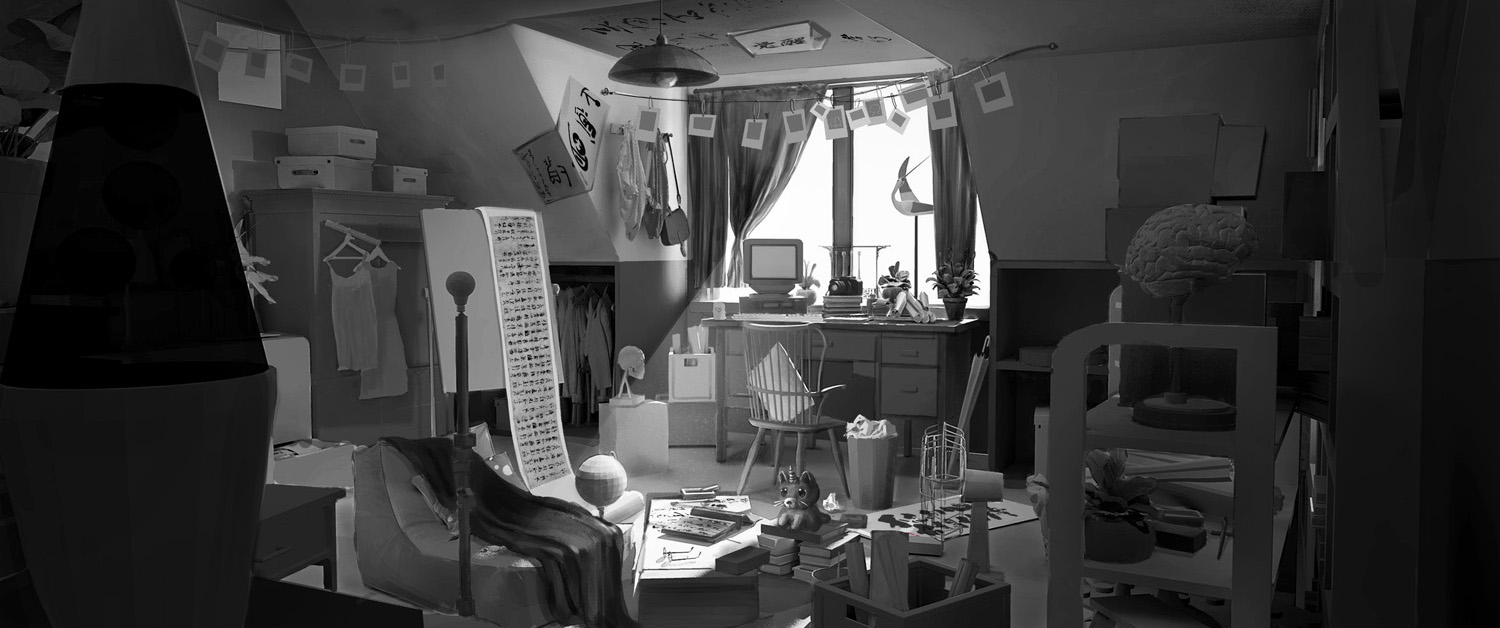
Can you find the human skull model, sleeping cat and reading glasses?


Can you find the cactus plants, magician's uniform and lockpicks?



